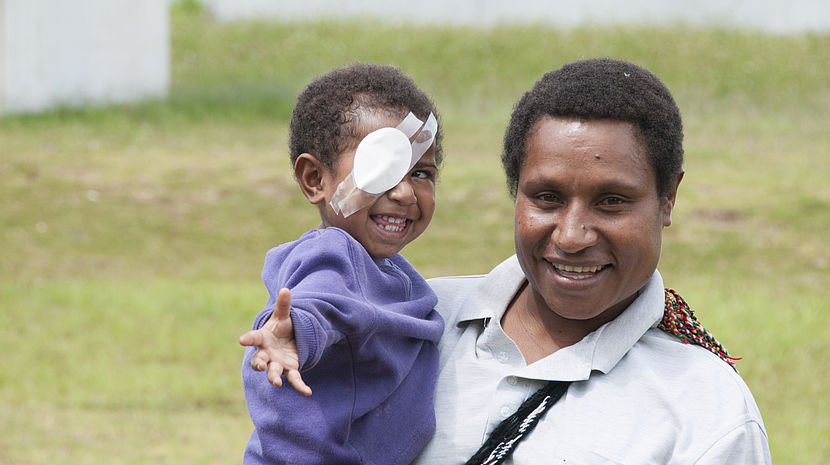Key to finding and supporting children with disabilities

Two-year-old Natasa was affected by cataract in both her eyes. She has now undergone successful cataract surgeries on both her eyes.
CBM
A new tool to help identify children with disabilities in low- and middle-income countries and ensure they get the support they need has been published by CBM’s research partner, the London School of Hygiene & Tropical Medicine.
Funding and technical support for the development of the guide and for the initial Key Informant Method projects was provided by CBM.
Evidence based guide to identify and support children with disabilities
The free resource from researchers at the International Centre for Evidence in Disability (ICED) at the London School of Hygiene & Tropical Medicineprovides an evidence-based guide and materials to identify children in an affordable and reliable way using community volunteers.
Due to the relatively low prevalence of childhood disability, approaches to survey the population in order to identify children are rare. This means many children with epilepsy or physical, sensory and intellectual impairments often fail to be detected and referred for support.
Children, who go without appropriate support, are more likely to experience serious illness and are less likely to go to school, with long-lasting negative impact on their lives [1].
This new resource, Using the Key Informant Method: A Working Guide, provides comprehensive support for policy makers, service providers and NGOs on how to train community volunteers and use an approach known as the Key Informant Method.
The method uses trained volunteers within the local community to simultaneously collect data on child disability, link children with disabilities to services and build evidence to advocate for inclusion of children with disabilities in their societies. The approach incurs up to ten times lower cost than surveys of the same size and has already been successfully tested in Bangladesh, Pakistan, Malawi and Kenya [2].
CBM Research Manager Christiane Noe says: “CBM’s investment and engagement in developing and improving an effective and affordable method to identify children with disabilities in partnership with ICED at the London School of Hygiene & Tropical Medicine has contributed to this valuable guide to use and promote the Key Informant Method in other settings as well. By identifying not only the number of children with impairments in a community or district but also the disabling barriers for them to access services and to participate in society through a community-based approach improves both the planning and implementation of services and also promotes awareness about disability and inclusion in society.”
Using the Key Informant Method: A Working Guide includes training materials and timetables, data collection forms and protocols for working with children and identifying childhood disability.
For more information or support, please email KIM(at)lshtm.ac(dot)uk.